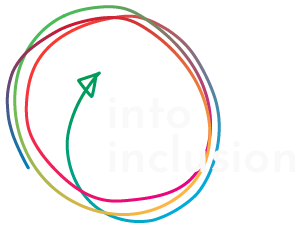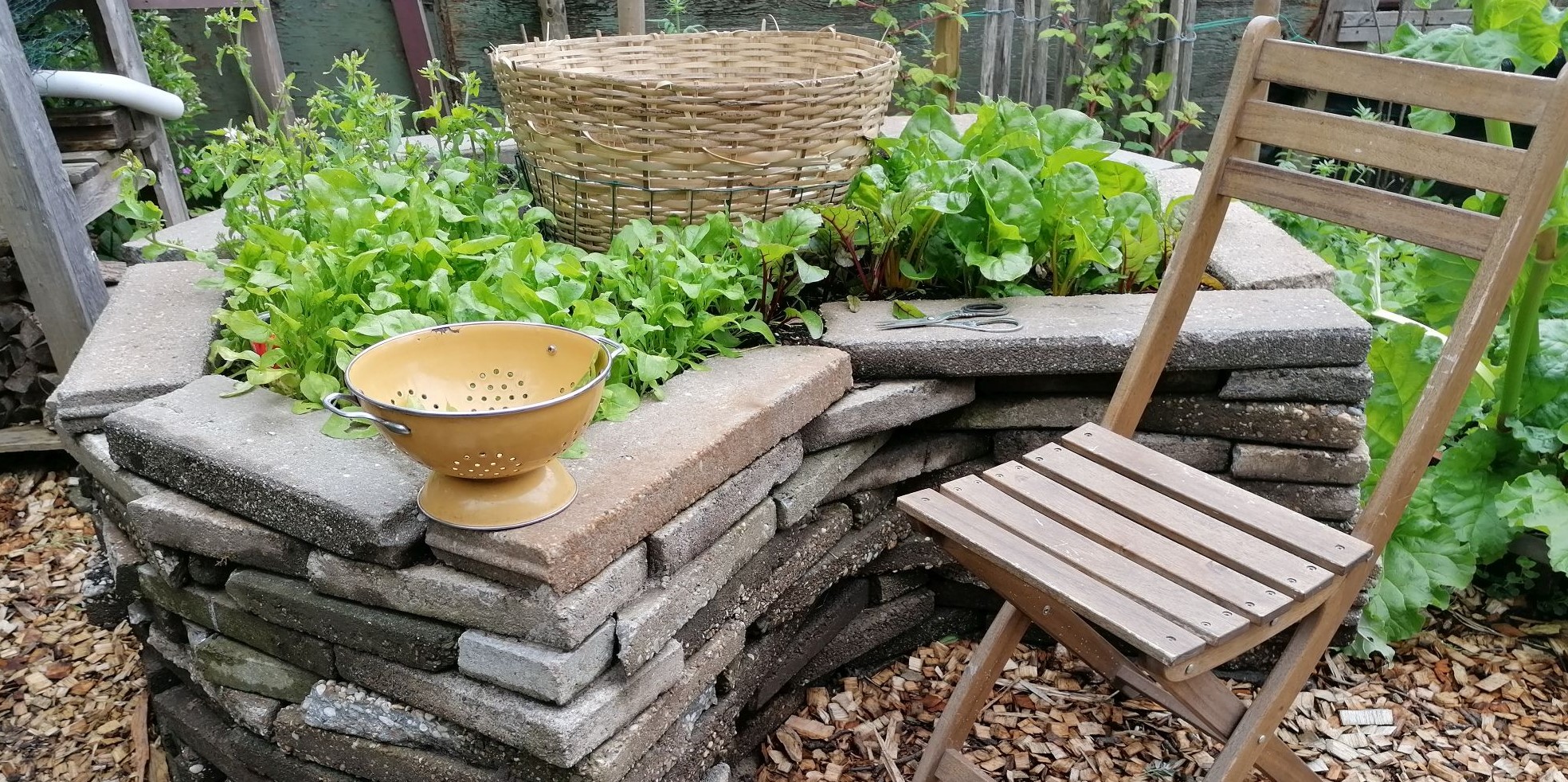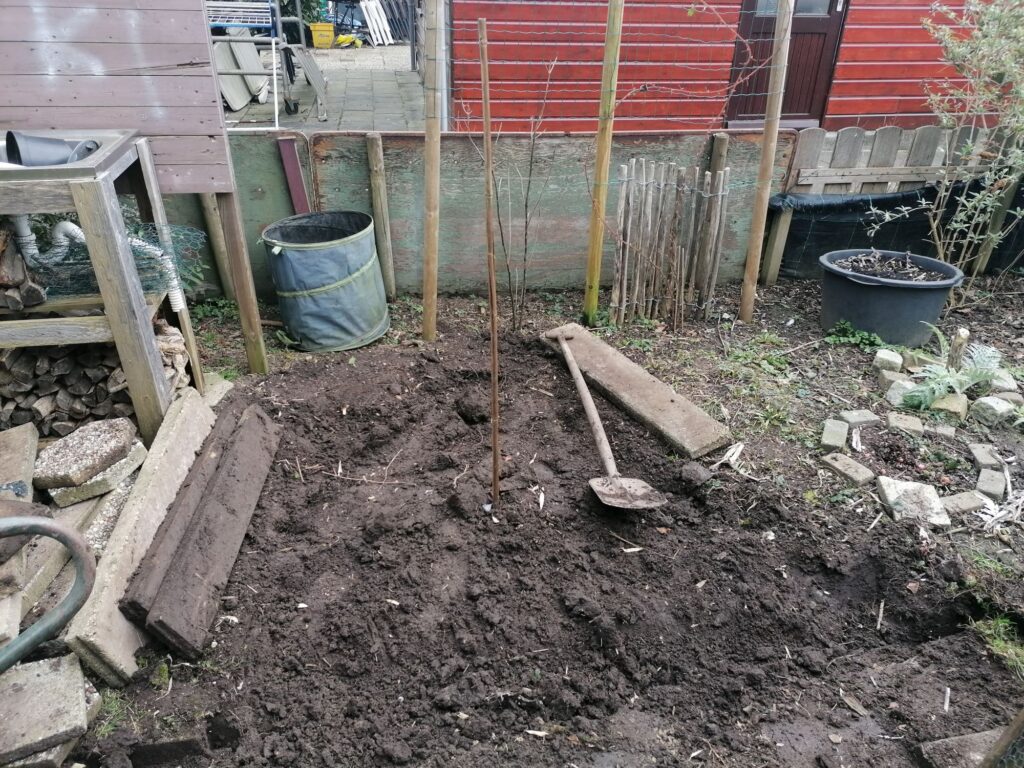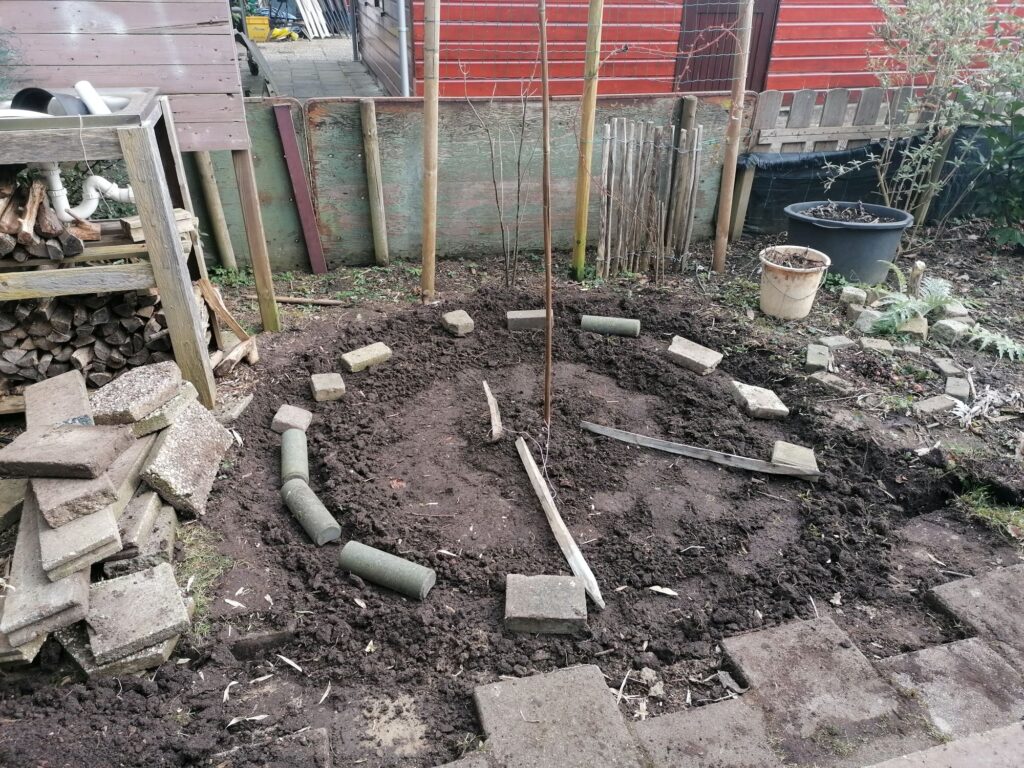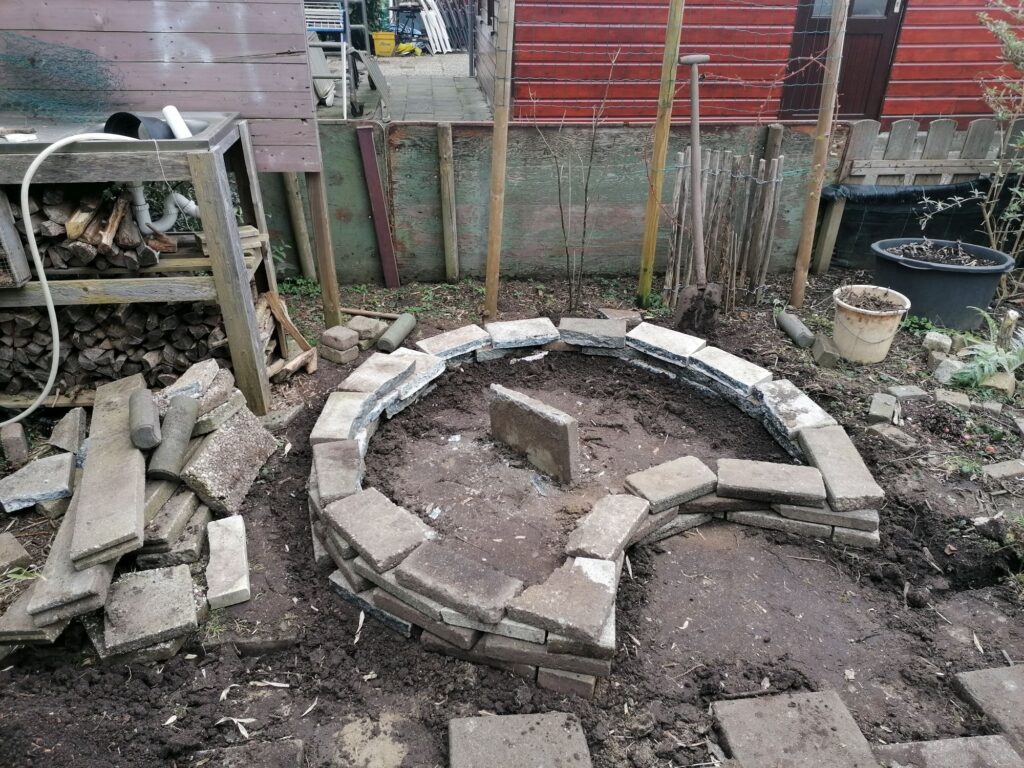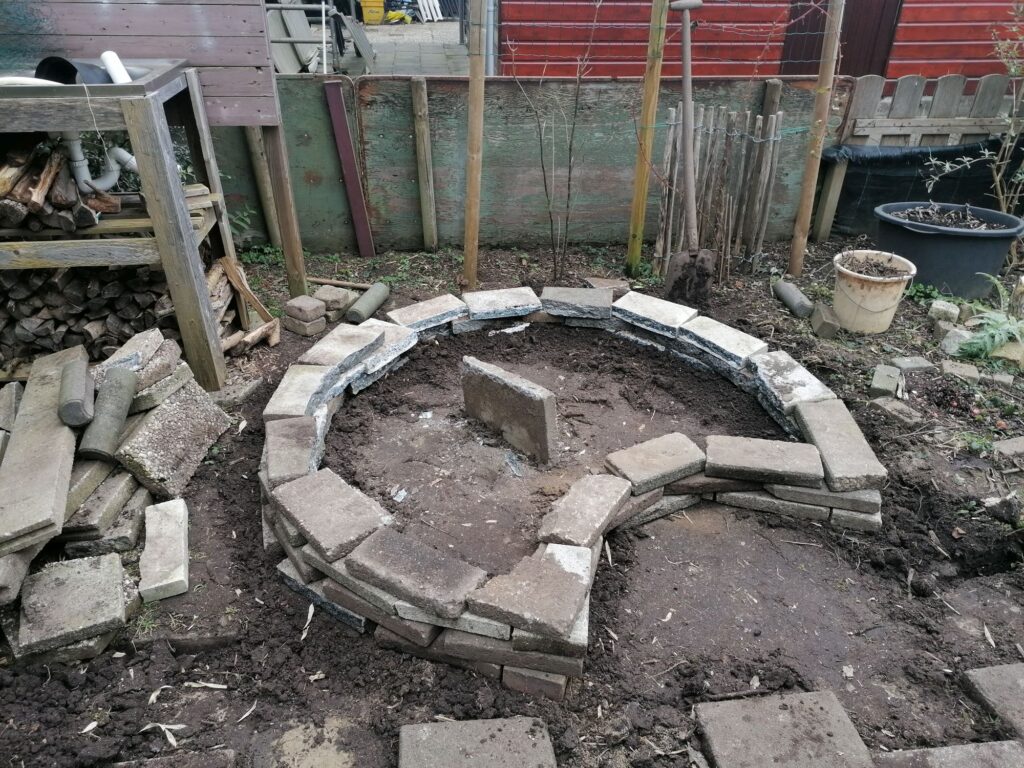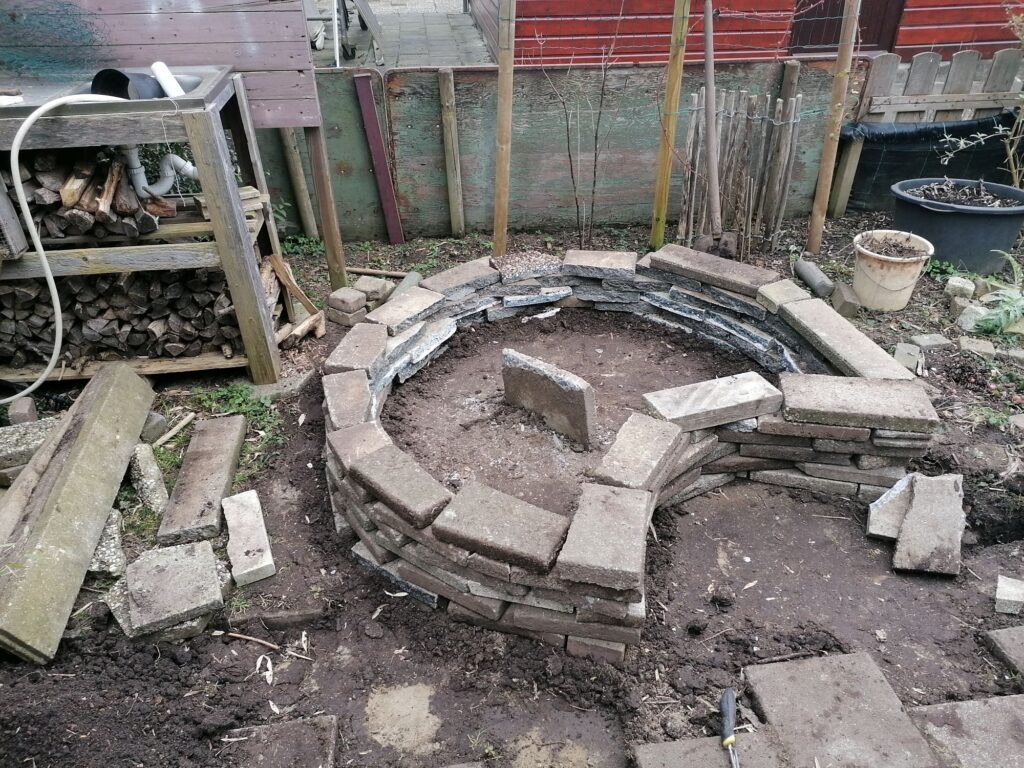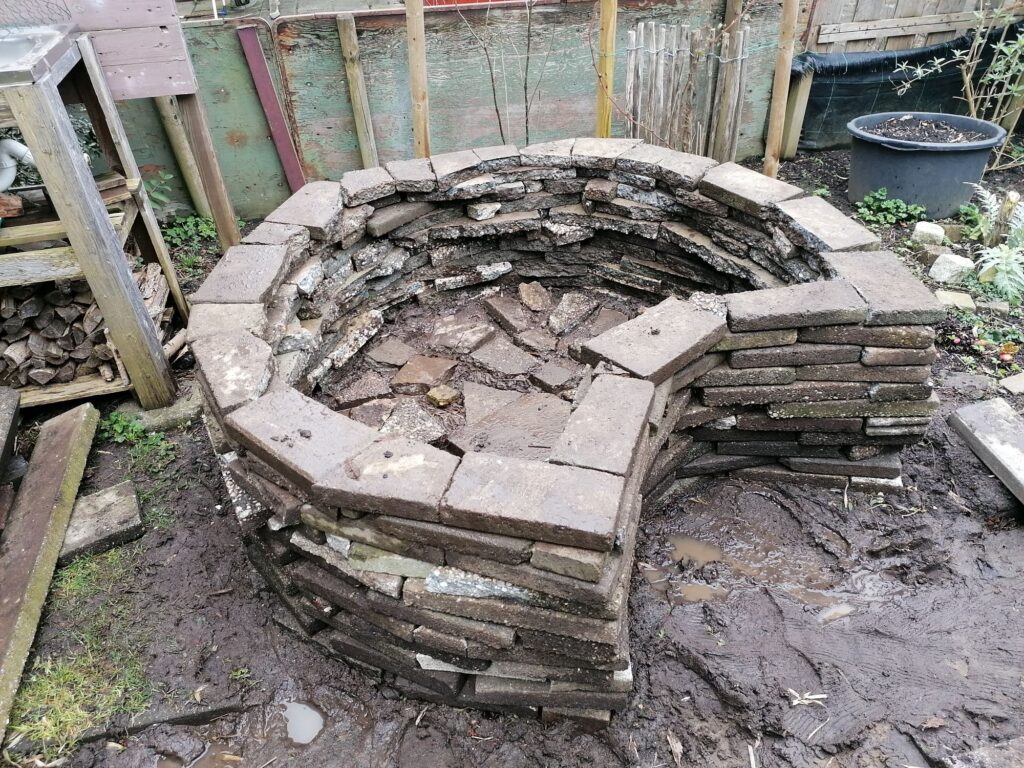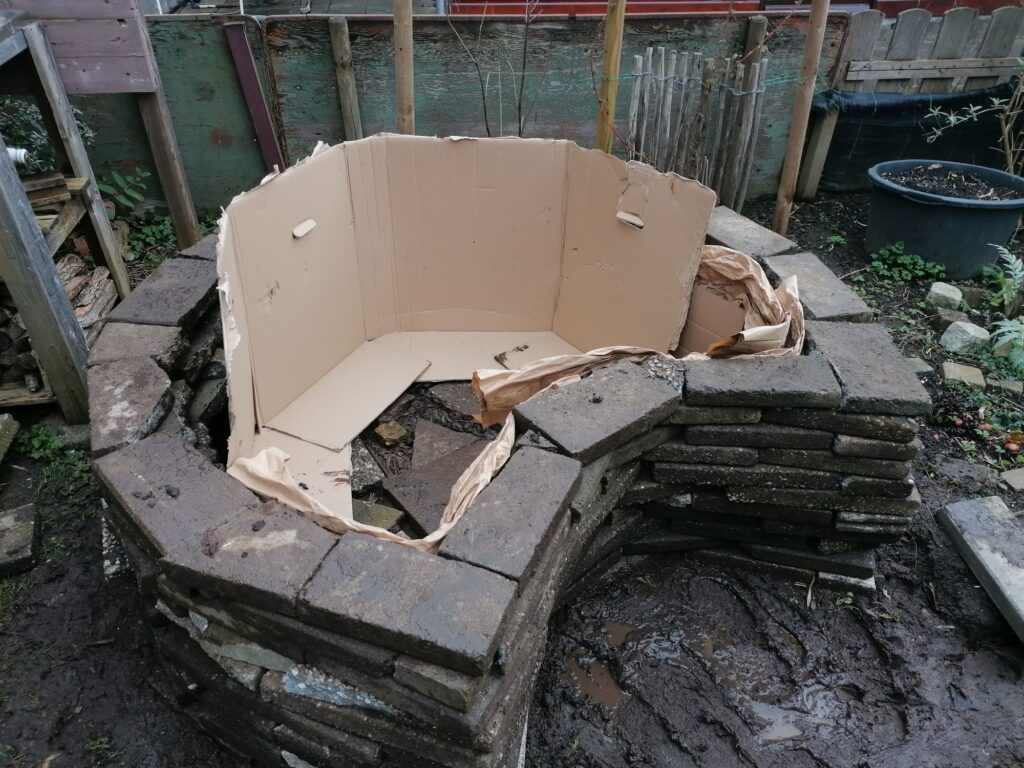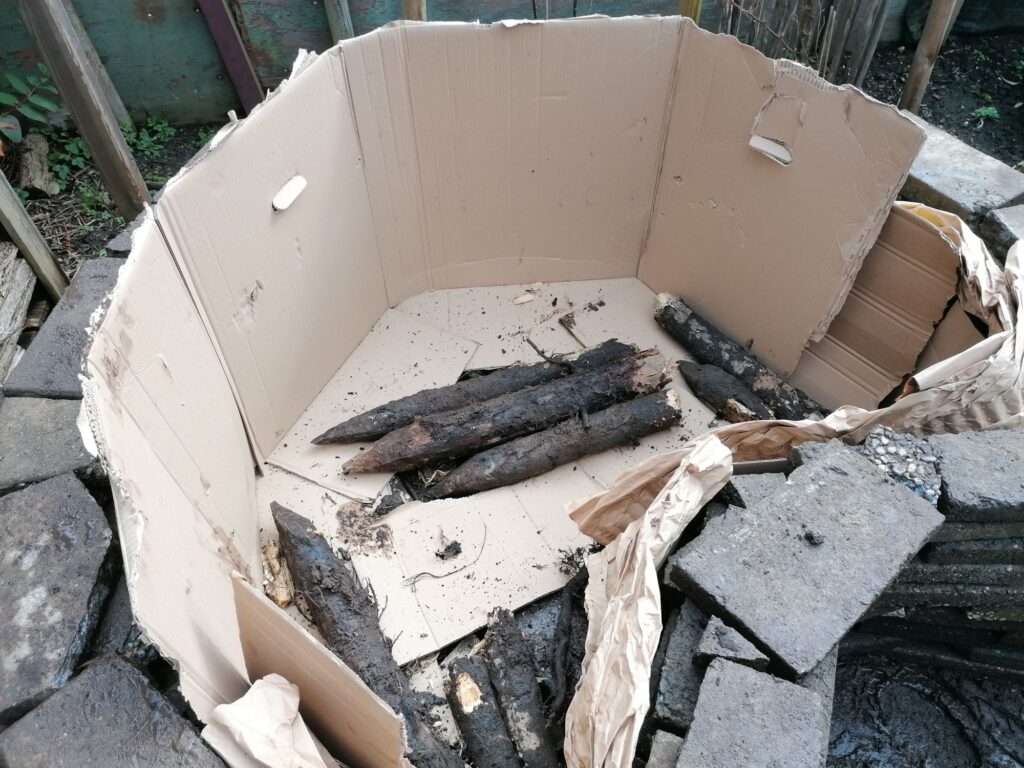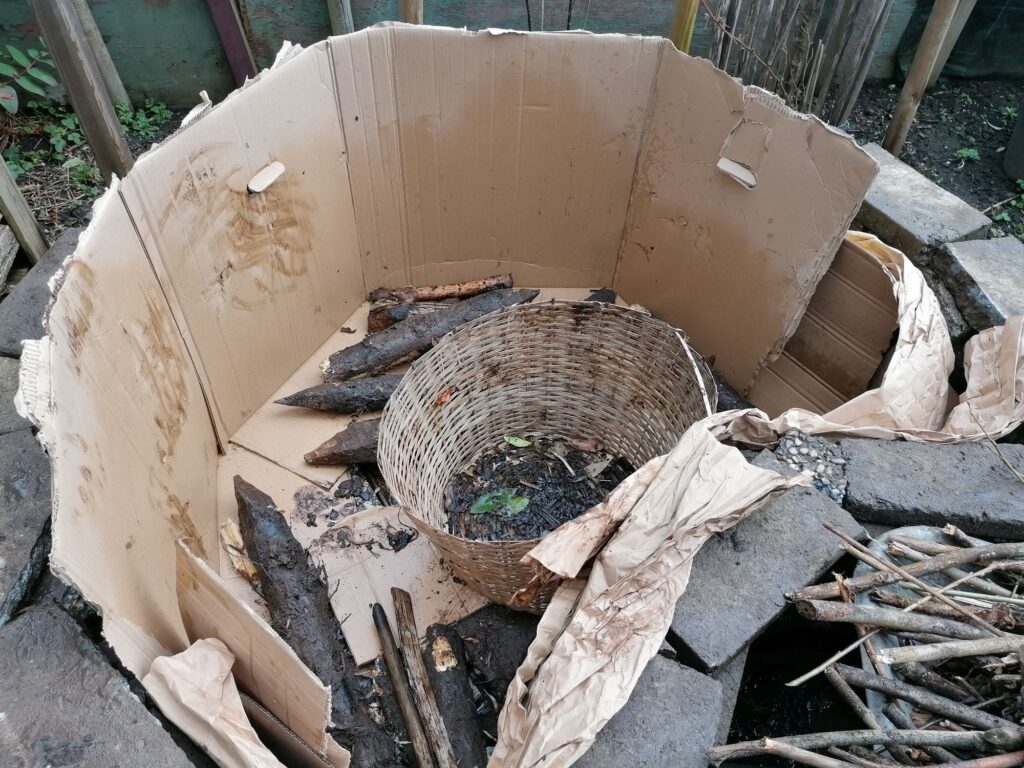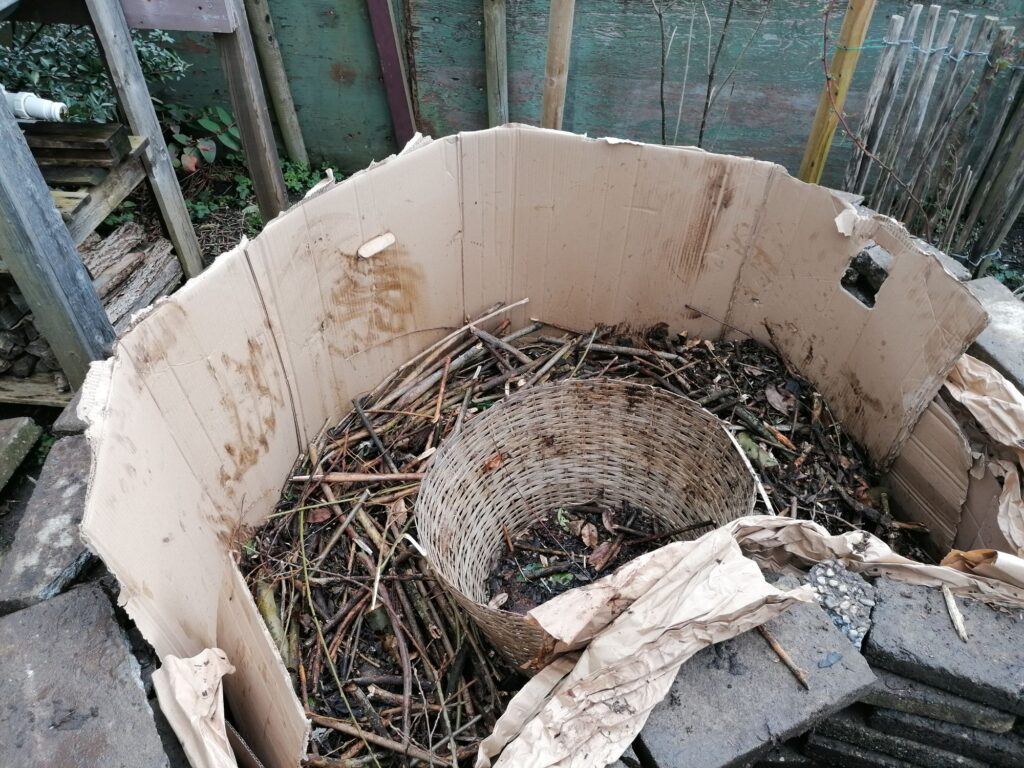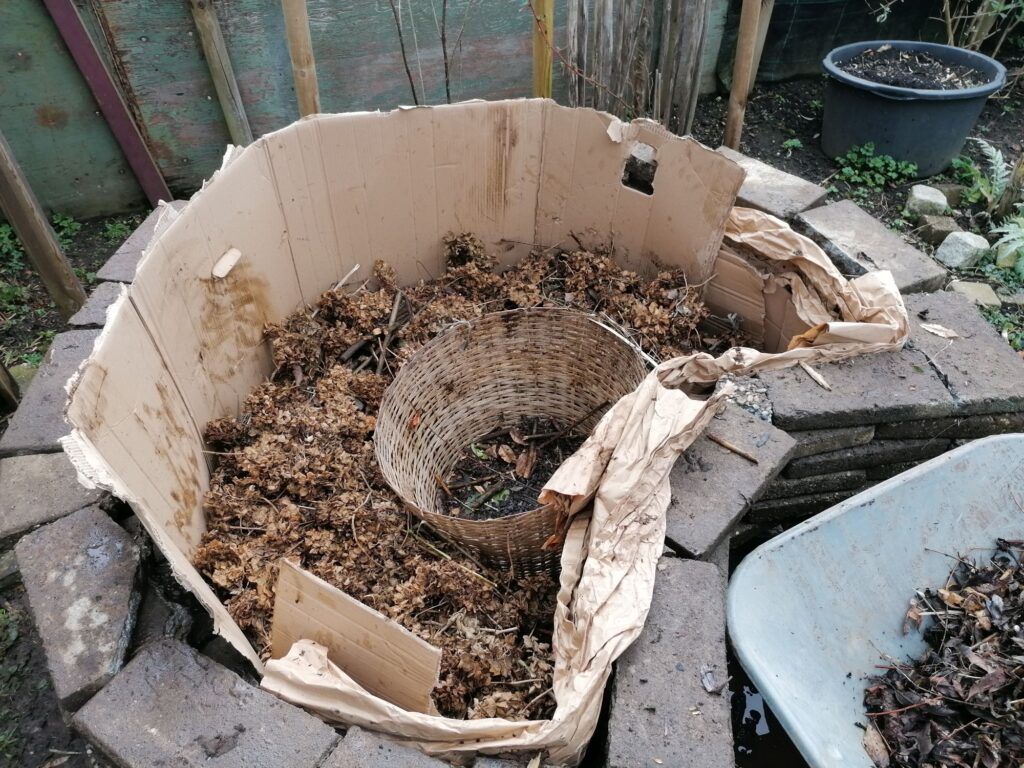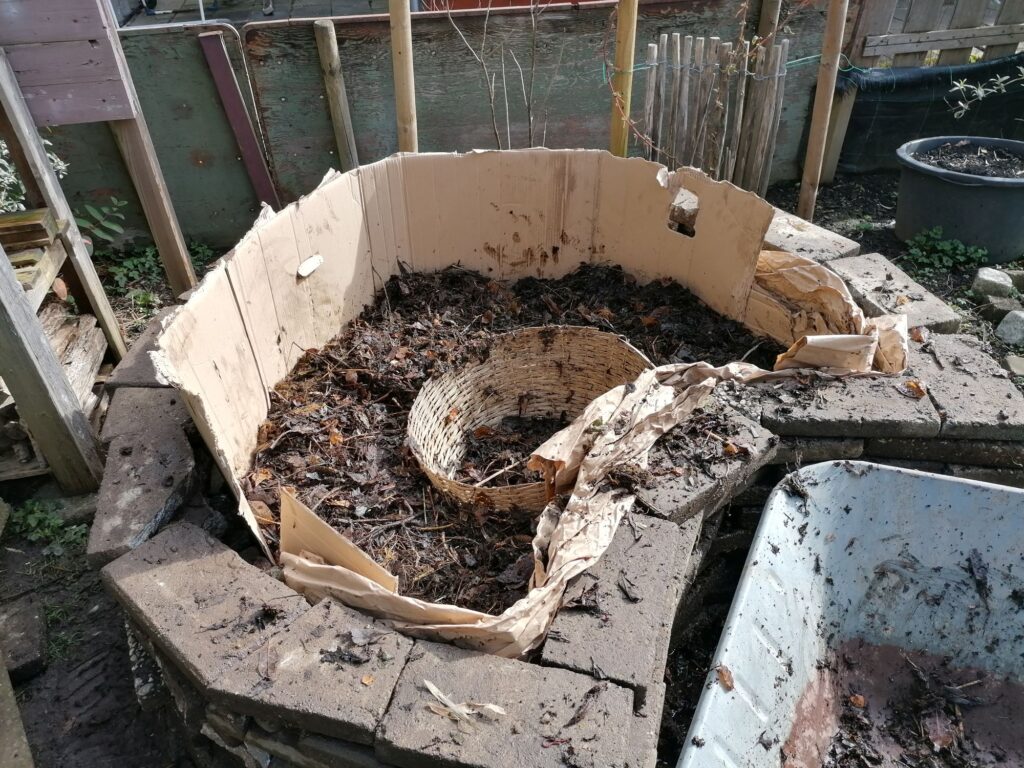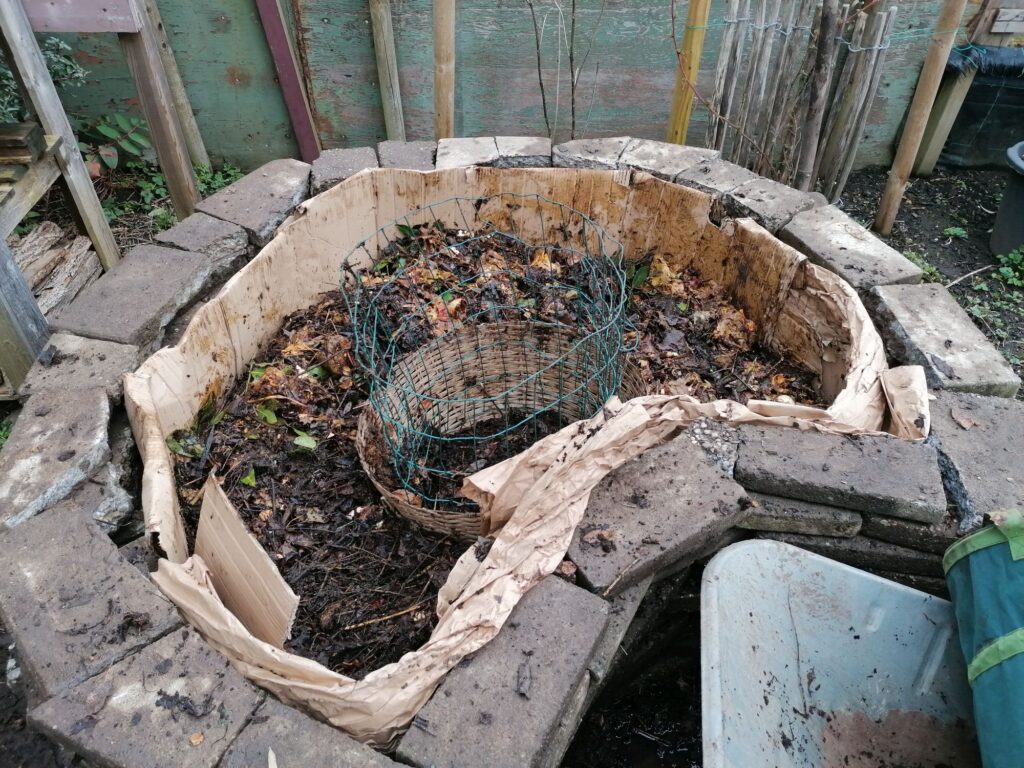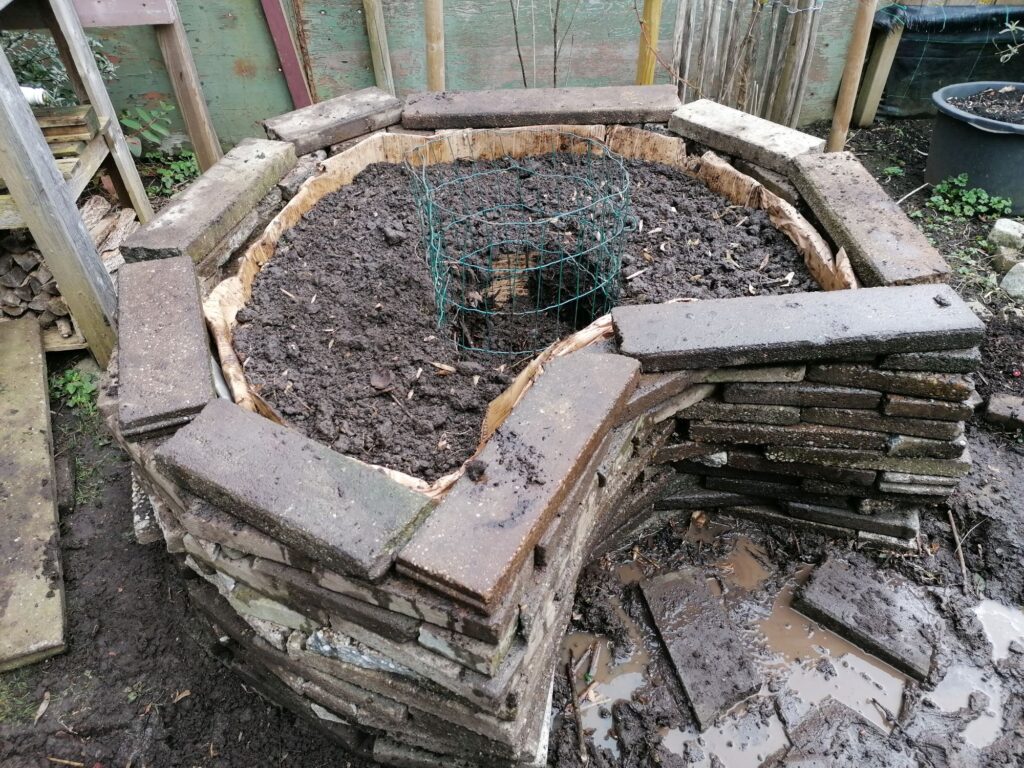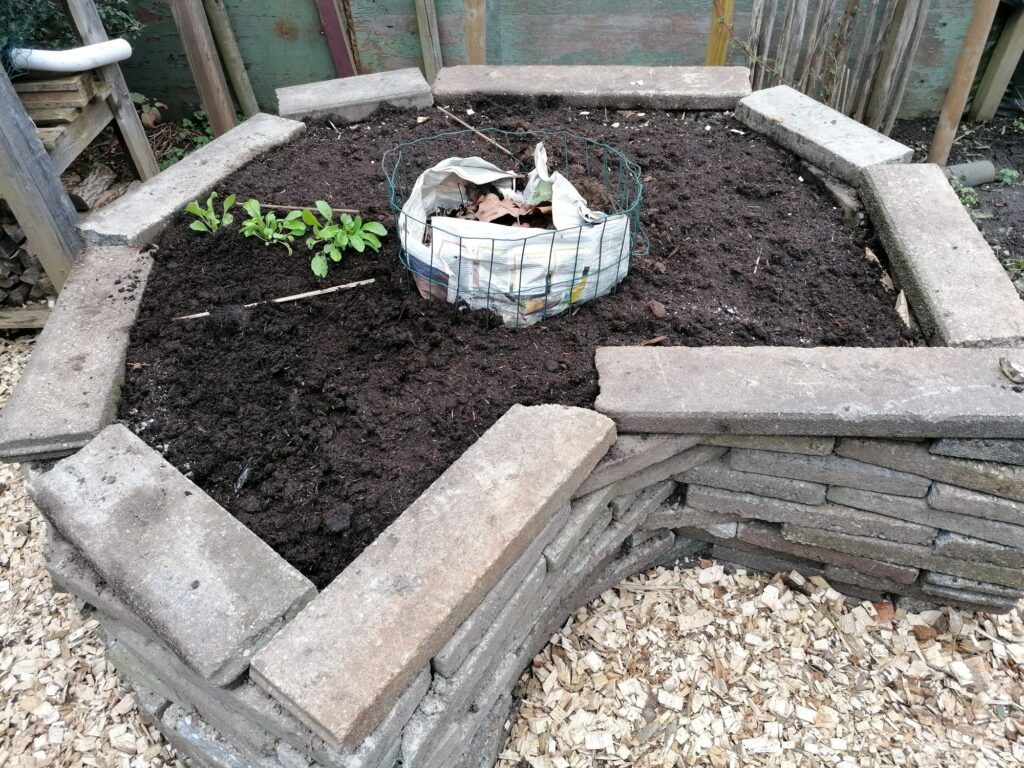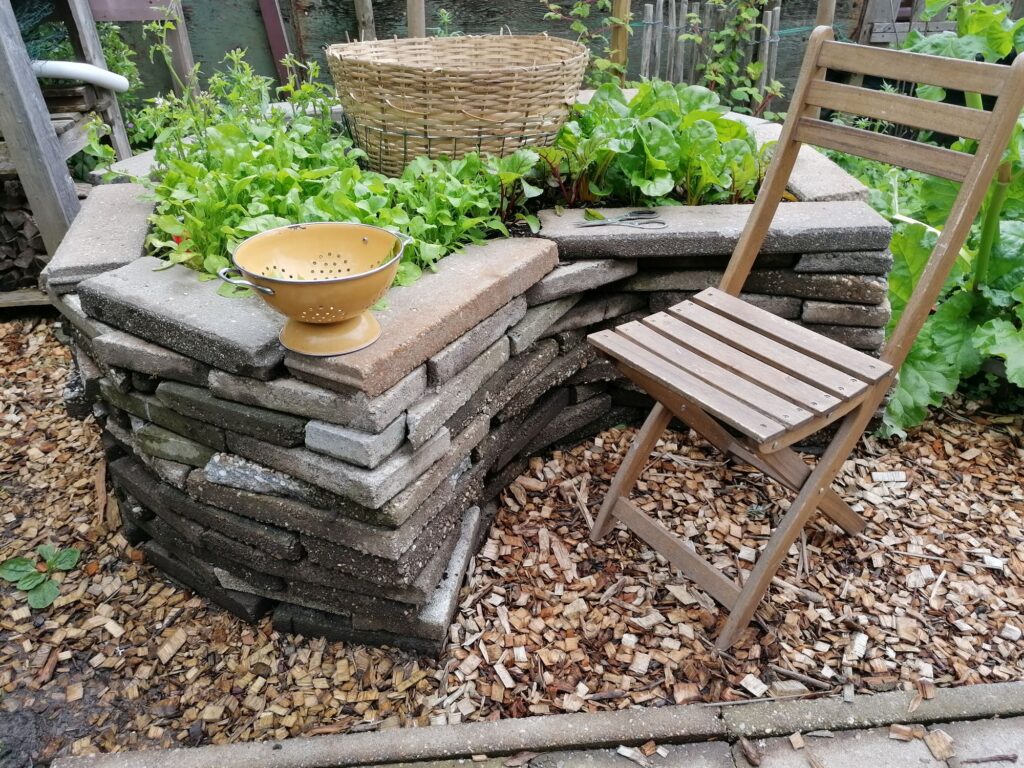Making a keyhole garden has been on my wish-list for a long time. This easy-to-reach garden is a perfect combination of all my passions: gardening, recycling and inclusion!
According to Wikipedia CARE Zimbabwe has developed the keyhole garden concept. In the 1990s the idea has been used in Lesotho to make gardening accessible for people living with HIV/AIDS. The walls of the raised bed are tall, so you do not have to bend over while working in them. The walls are sturdy enough, so that you can lean against them while you are at work. At the same time the entire bed is within arm’s reach. A keyhole garden is also very suitable for persons with physical impairments or elderly people. And for gardeners like me, who enjoy the comfort of picking a salad without getting on their knees.
A keyhole garden is a two-meter-wide round raised garden with a keyhole-shaped indentation on one side. The indentation allows you to add uncooked vegetable scraps, grey water, and manure into a composting basket that sits in the center of the bed. In this way, composting materials can be added to the basket throughout the growing season to provide nutrients for the plants. The upper layer of soil is hilled up against the center basket so the soil slopes gently down from the center to the sides. Most keyhole gardens rise about one meter above the ground (mine is a bit lower, but I may make it a bit higher next year) and have walls made of stone. The stone wall not only gives the garden its form, but helps trap moisture within the bed, so it’s a very suitable method for dry climates.
I have built up the wall of my own keyhole garden with old broken tiles and filled it with cardboard, branches, twigs, leaves, compost and a top layer of black soil. But of course you can use any local available material to make the walls. And if you don’t have organic material available to fill your garden, you can use loads of cardboad and old paper. It quickly turns into fertile ground for your vegetables. For the composting hole in the middle I have used two old baskets. On the pictures below you can follow the building process.
In the last picture you see how well the vegetables are growing! Because of the fertile soil you can plant the vegetables close to each other. This will give weeds less chance, and will give you a good crop in a small place.
Do you want to learn more about keyhole gardening? The following resources will help you get started:
· On this website you will surely find inspiration: 30 examples of keyhole gardens from all over the world, including links to instruction videos.
- You can join the Facebook group Keyhole Garden Discussion if you want tips from other users (most of the users live in Texas).
Hope you will enjoy gardening! I am interested to hear your experiences with this type of gardening, especially in relation to accessibility. You can reach out to me at: paulien@into-inclusion.nl
Green greetings, Paulien Bruijn – Disability Inclusion Consultant
